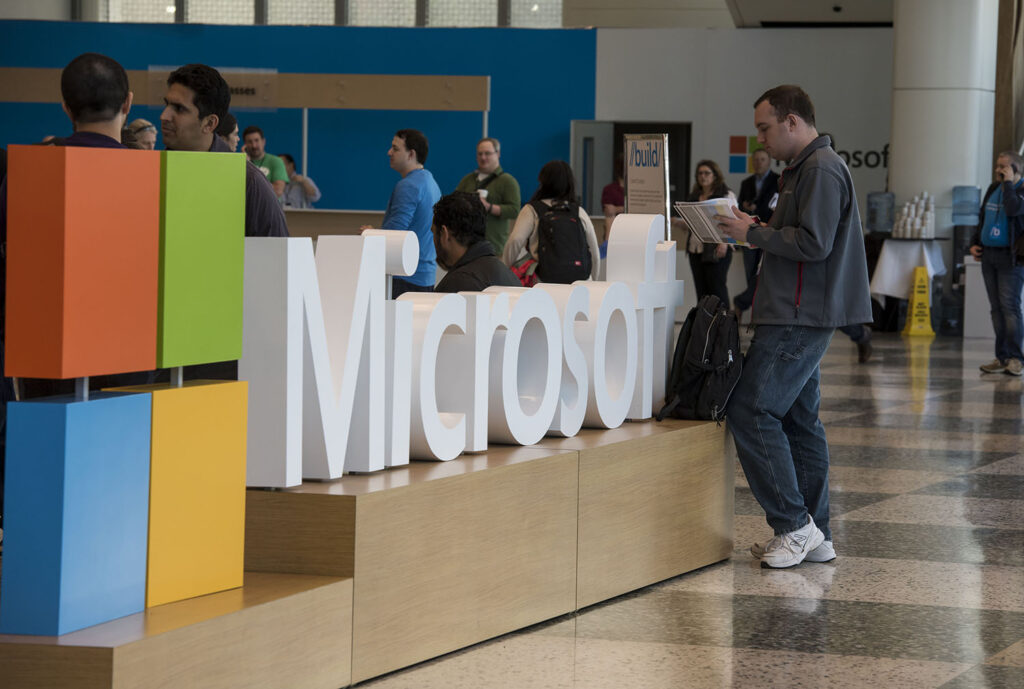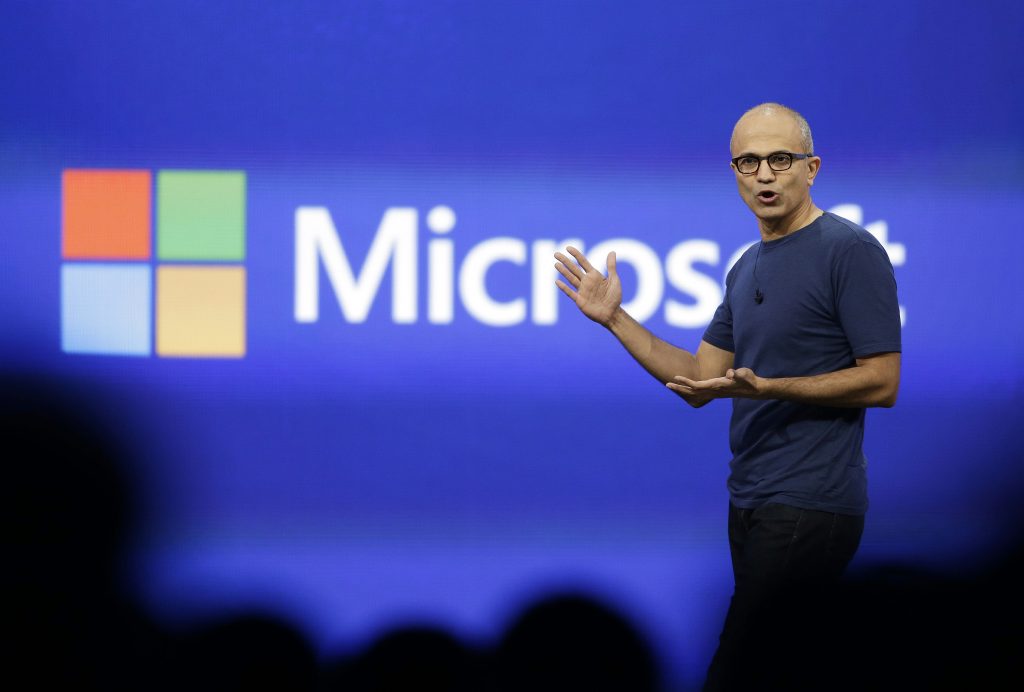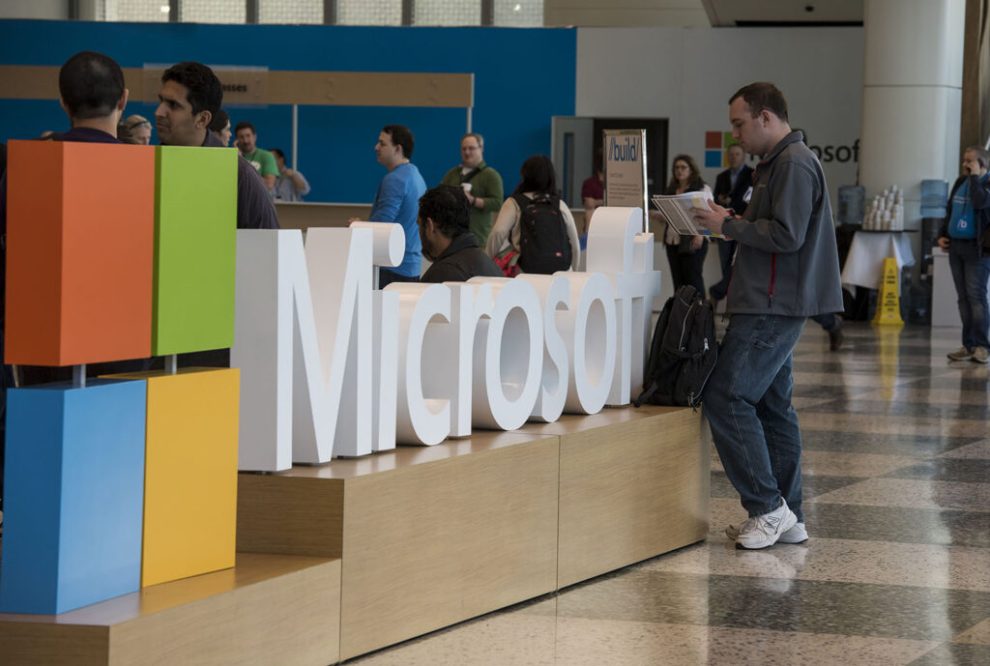Microsoft is laying off about 9,000 employees after applying to fill thousands of foreign worker positions in the months leading up to the mass layoffs, according to a Washington Examiner analysis of U.S. Department of Labor data.
DOL quarterly statistics show that Microsoft submitted 4,776 labor condition applications (LCA), a pre-requisite for filing H-1B visa petitions, between September and March, indicating to the U.S. government that it intends to fill 14,181 positions with foreign workers this fiscal year. The filings, however, include extensions to existing employment (3,680), petition amendments (285), and transfers (487), not just new H-1B hires, although the number of new foreign worker hires (9,738) was still high.
Moreover, this preliminary process typically involves companies like Microsoft overestimating the number of positions they want to fill by renewing existing visas or sponsoring new ones as a way of providing a rough estimate to the DOL.
But the volume of applications for foreign worker positions, coming in the months before Microsoft laid off thousands of employees to cut costs, has drawn scrutiny to the Seattle-based tech giant amid a broader national debate over the effects of immigration policy on American workers and wages.
“It’s explicitly legal to replace Americans with H-1B workers, and that didn’t happen by accident,” Immigration Reform Law Institute (IRLI) legal counsel John Miano told the Washington Examiner. “That was Congress’s deliberate action.”
To accommodate a supposed talent shortage in the U.S. labor market, H-1B visas allow foreign nationals in skilled occupations with “highly specialized knowledge” to work temporarily in America.
But H-1B holders are likely competing with similarly skilled U.S. workers for jobs instead of complementing them in their respective fields, according to a 2019 report from the Atlantic Council. “By every objective measure,” scholars Ronil Hira and Bharath Gopalaswamy wrote, “most H-1B workers have no more than ordinary skills, skills that are abundantly available in the U.S. labor market.”
EVERYTHING TO KNOW ABOUT THE H-1B VISA DEBATE SURROUNDING TRUMPWORLD
Employing H-1B holders, who are often willing to work for less than their American counterparts, can be financially beneficial for corporations seeking to cut labor costs without technically violating wage laws. This cost-saving strategy consequently depresses average wages for domestic workers.
Miano said the reality of the H-1B program is completely different from the rhetoric surrounding it.
“We have created this myth basically telling the public that the H-1B program employs highly skilled workers when no Americans can be found, which is completely different from what Congress has actually enacted,” Miano said. “There’s no skill requirement. The visas are allocated by order of application, not by skill. So it has nothing to do with labor shortages. This has been a giant exercise in gaslighting.”
Thousands of jobs slashed
All of Microsoft’s preliminary H-1B applications were prepared by an India-based business on behalf of Microsoft and swiftly approved, or “certified,” by the DOL within the seven-day processing window. The periods of employment for foreign workers are mostly slated to begin in 2025 and last through 2028.
Meanwhile, Microsoft’s latest round of layoffs follows two waves of staffing cuts this calendar year: about 6,000 jobs were axed in May, and another 300 or so were slashed in June. The staff reduction announced last week, which reportedly accounts for 4% of Microsoft’s workforce, brings the total number of employees let go over the past few months to approximately 15,000.
News of Microsoft’s mass layoffs coincides with consumer concerns over whether the Big Tech company is increasingly seeking to outsource labor from foreign countries.
WHY H-1B IS WRONG FOR AMERICAN WORKERS
Reporting from the second quarter from the U.S. Office of Foreign Labor Certification names Microsoft as one of the top 10 corporations working to bring in foreign workers through the controversial visa program this fiscal year, which started on October 1. These so-called Temporary Specialty Occupations Program positions include H-1B holders; H-1B1, a variant visa class for workers from Singapore and Chile; and E-3, an Australian iteration.
As of March 31, Microsoft ranks No. 3 nationwide with 14,181 foreign worker positions certified for fiscal 2025, almost enough to replace every employee laid off since May, according to the second quarter DOL report, if that number of foreign worker positions reflected the number of foreign workers Microsoft actually intended to bring to the U.S., which Microsoft disputed.
In comparison, at this time last year, Microsoft was not even among the top 10 employers clocking the highest number of H-1B eligible jobs, though it rose to ninth nationally (10,379 positions certified) by the end of fiscal 2024 in late September.

Microsoft is now third in the nation by number of approved H-1B petitions. According to U.S. Citizenship and Immigration Services (USCIS) fiscal 2025 figures, to date, Microsoft has 2,862 H-1B beneficiaries approved by the federal immigration agency, slightly ahead of Meta at 2,843 and Google at 2,781.
So far this fiscal year, with only 37 rejections, Microsoft received approval for 184 new H-1B hires, 330 renewals, 1,715 modifications such as changes to job titles, 399 transfers, and 234 amended petitions, the Washington Examiner found.
A spokesperson for Microsoft told the Washington Examiner that the federal government’s data with regard to the 14,181 positions certified does not match the company’s internal numbers.
“This data far exceeds the actual H-1B petitions we filed the past 12 months,” the Microsoft spokesperson said, “and 78% of those were extensions for existing employees and not new employees coming to the U.S.”
The spokesperson added that Microsoft is on track to hit similar numbers and percentages for the rest of this calendar year.
A number of H-1B workers were also recently let go, the company confirmed.
“It’s wrong to suggest our H-1B applications are in any way related to the recent job eliminations in part because employees on H-1Bs also lost their roles,” the Microsoft spokesperson said.
Cheaper labor drives down costs
Despite widespread layoffs throughout the tech sector, H-1B demand remains high in the industry. Indeed, the job of software developer constitutes over a third (36.2%) of total certified positions this year across all prospective employers, followed by electronics engineer (4.7%), and IT project manager (3.9%).
Ira Mehlman, media director of the Federation for American Immigration Reform (FAIR), said there are many such cases of Fortune 500 companies switching out American workers for foreigners.
Perhaps the best-known case, Mehlman mentioned, involved Disney laying off U.S. workers and forcing them to train their foreign replacements as a condition of receiving a severance package.
DISPLACED WORKER DISHES DIRT ON DISNEY’S H-1B LAYOFFS
“Any time a company simultaneously lays off American workers while it is bringing in guest workers there ought to be suspicion that they are doing so because it is advantageous for the employer,” Mehlman told the Washington Examiner. “Companies have greater control over the wages and mobility of guest workers than they do over U.S. workers.”
Mehlman said often times H-1B holders do not directly work for the U.S. company that is employing them; rather, they are beholden to labor contractors, the largest of which are based in India.
“These contractors profit from this arrangement by taking a cut from the workers’ wages,” Mehlman said. “Thus, the system also enriches the labor contractors at the expense of American workers who might otherwise fill those jobs.”
In that regard, Miano said the public tends to blame the Indian body shop system. “The reality is even Microsofts of the world use these Indian body shops as well,” Miano continued. “They don’t want them to go away, and so we just kind of scream at these body shops.”
SENATE IMMIGRATION BILL BARS THREE INDIA-BASED COMPANIES FROM EXTRA H1-B VISAS
Critics of the H-1B visa program warn that importing cheaper foreign labor will consequently drive down the wages of American workers. According to a recent USCIS report, the median salary for a new H-1B visa holder is only $94,000, hardly suggesting world-class skillsets.
The presence of so many lower-paid foreign workers has a dampening effect on the prevailing wage, Mehlman explained, which affects the wages of similarly-skilled American workers.
It is unclear how many of Microsoft’s 15,000 laid-off employees were American workers or how a role A.I. integration is playing in the staff shrinkage.
At a Meta conference in April, Microsoft CEO Satya Nadella said up to 30% of the company’s code inside its repositories is written by artificial intelligence. Microsoft CTO Kevin Scott, speaking generally on the future of coding, said he expects 95% of all code to be A.I.-generated by 2030. “Very little is going to be human-written code,” Scott said in a March appearance on the 20-minute Venture Capitalist (20VC) podcast.

Microsoft is expanding operations in India, including the establishment of new data centers. In January, Nadella announced a strategic partnership with the government of India as well as a $3 billion investment in India cloud and A.I. infrastructure. As part of its “commitment” to accelerating A.I. innovation in India, Microsoft is training 10 million Indians in A.I. skills.
“They brought in an Indian CEO, and he’s basically trying to make Microsoft into an Indian company,” Miano said of Nadella.
Microsoft recorded nearly $26 billion in net income for its third quarter ending on March 31, an 18% increase compared to the prior year’s reporting period. At the time, Nadella cited A.I. as one of the forces driving these earnings and accordingly cutting costs.
DOL was contacted for comment.
























